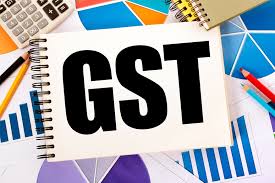Govt to apply GST on Zomato, Swiggy: The impact of the new tax structure and what it means for you
At the start of last week, reports that the central government was looking to get in on the food delivery boom spurred on by the COVID-19 pandemic, led to significant backlash on social media from Indians concerned that ordering was just about to become dearer.
But last Friday, the GST Council approved a proposal over a new tax structure to come into effect on January 1, 2022, that would have allayed those fears.
Addressing a press conference following the GST Council meeting, Finance Minister Nirmala Sitharaman noted that “the place where the food is delivered will be the point where tax will be collected by services like Swiggy and Zomato.”
What this means
As it stands, if you were to order food from a specific restaurant via a food aggregator app like Swiggy or Zomato, it is the responsibility of the food delivery app to collect a 5 per cent tax on the items ordered and then pass this on to the restaurant.
However, the government has indicated that many restaurants, having collected this 5 per cent tax revenue from the food aggregator, have failed to deposit this as tax, instead adding it to their total revenue.
As such, the new tax structure, to come into effect next year, will place the onus on the food delivery app to not only collect the existing 5 per cent tax consumers already pay for food but also deposit it on behalf of the restaurants from which food has been ordered.
Clarifying the approved decision, Revenue Secretary Tarun Bajaj explained, “Suppose you order food from the aggregator, now the restaurant is paying taxes. But we found some restaurants were not paying. We are now saying that if you order, the aggregator will collect from the consumer and pay to the authorities instead of the restaurant doing this.”
“There is no extra tax, there is no new tax. The tax was payable by restaurants, now instead of restaurants, the tax will be payable by aggregators which will also prevent revenue leakage,” he added.
Representational image. | Photo Credit: PTI
KEY HIGHLIGHTS
As it stands, if you were to order food from a specific restaurant via a food aggregator app like Swiggy or Zomato, it is the responsibility of the food delivery app to collect a 5 per cent tax on the items ordered and then pass this on to the restaurant
The new tax structure, to come into effect next year, will place the onus on the food delivery app to not only collect the existing 5 per cent tax consumers already pay for food but also deposit it on behalf of the restaurants from which food has been ordered
Importantly, what this means is that the cost of ordering in isn't going to change for customers at all
At the start of last week, reports that the central government was looking to get in on the food delivery boom spurred on by the COVID-19 pandemic, led to significant backlash on social media from Indians concerned that ordering was just about to become dearer.
But last Friday, the GST Council approved a proposal over a new tax structure to come into effect on January 1, 2022, that would have allayed those fears.
Addressing a press conference following the GST Council meeting, Finance Minister Nirmala Sitharaman noted that “the place where the food is delivered will be the point where tax will be collected by services like Swiggy and Zomato.”
What this means
As it stands, if you were to order food from a specific restaurant via a food aggregator app like Swiggy or Zomato, it is the responsibility of the food delivery app to collect a 5 per cent tax on the items ordered and then pass this on to the restaurant.
However, the government has indicated that many restaurants, having collected this 5 per cent tax revenue from the food aggregator, have failed to deposit this as tax, instead adding it to their total revenue.
As such, the new tax structure, to come into effect next year, will place the onus on the food delivery app to not only collect the existing 5 per cent tax consumers already pay for food but also deposit it on behalf of the restaurants from which food has been ordered.
Clarifying the approved decision, Revenue Secretary Tarun Bajaj explained, “Suppose you order food from the aggregator, now the restaurant is paying taxes. But we found some restaurants were not paying. We are now saying that if you order, the aggregator will collect from the consumer and pay to the authorities instead of the restaurant doing this.”
“There is no extra tax, there is no new tax. The tax was payable by restaurants, now instead of restaurants, the tax will be payable by aggregators which will also prevent revenue leakage,” he added.
Importantly, what this means is that the cost of ordering in isn't going to change for customers at all. The new tax structure though will have significant implications for restaurants. Firstly, it will require them to register themselves in the same way that e-commerce vendors are expected to. Secondly, it will also require them to keep separate books for accounts – one for all orders fulfilled through food delivery apps like Swiggy and Zomato, and another for all direct orders.
As per some reports, it is the smaller restaurants (with turnovers under Rs 20 lakh) whose turnovers will be hit hardest. These restaurants were excluded from the GST net. With food aggregators now responsible for depositing taxes on behalf of the restaurants, the revenues of these smaller restaurants are likely to take a significant hit.
Download our App to get knowledge updates: https://play.google.com/store/apps/details?id=com.app.gstmitra
Join Our Telegram Channel for more updates:https://t.me/praveengst




Comments
Post a Comment